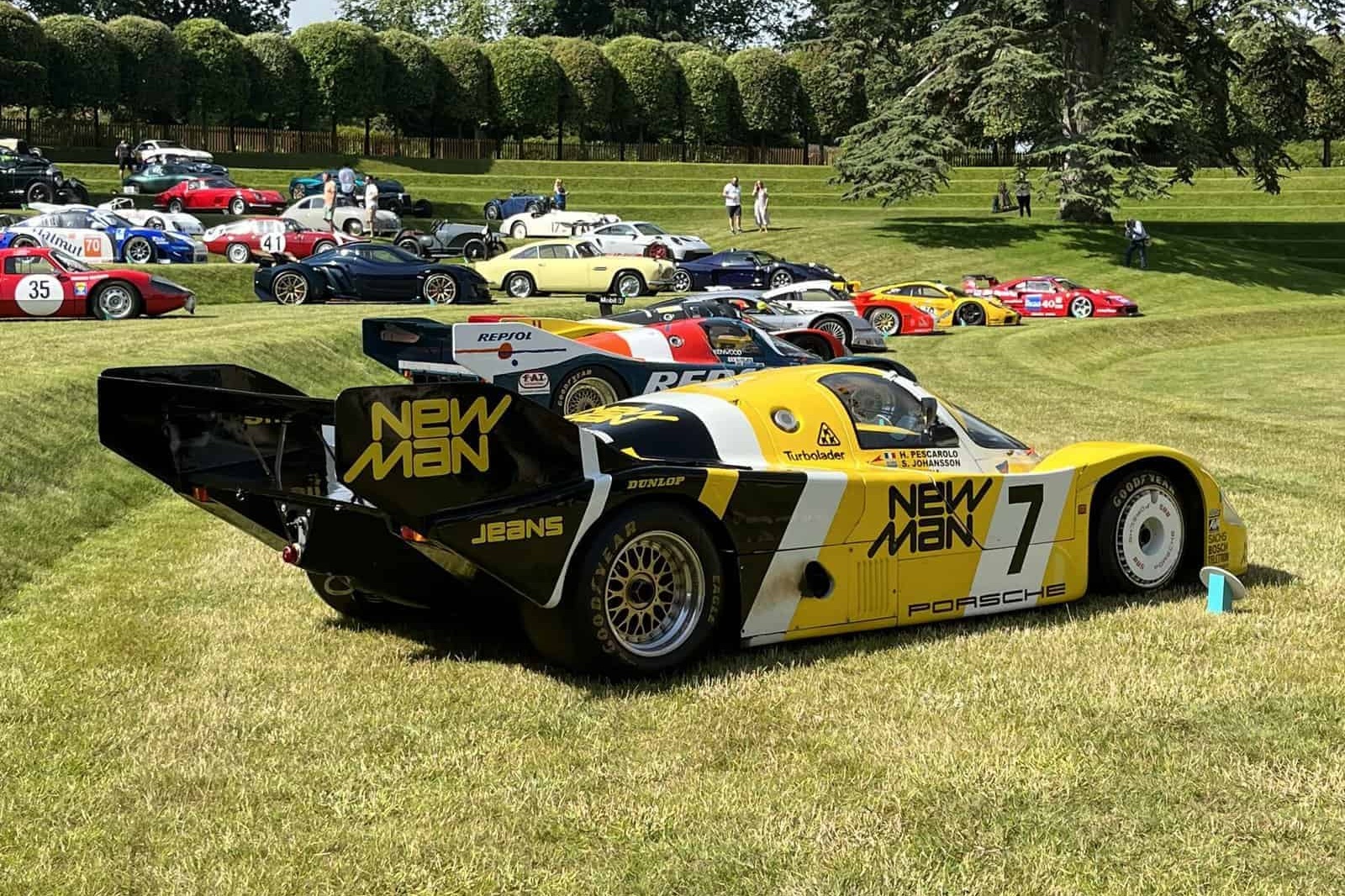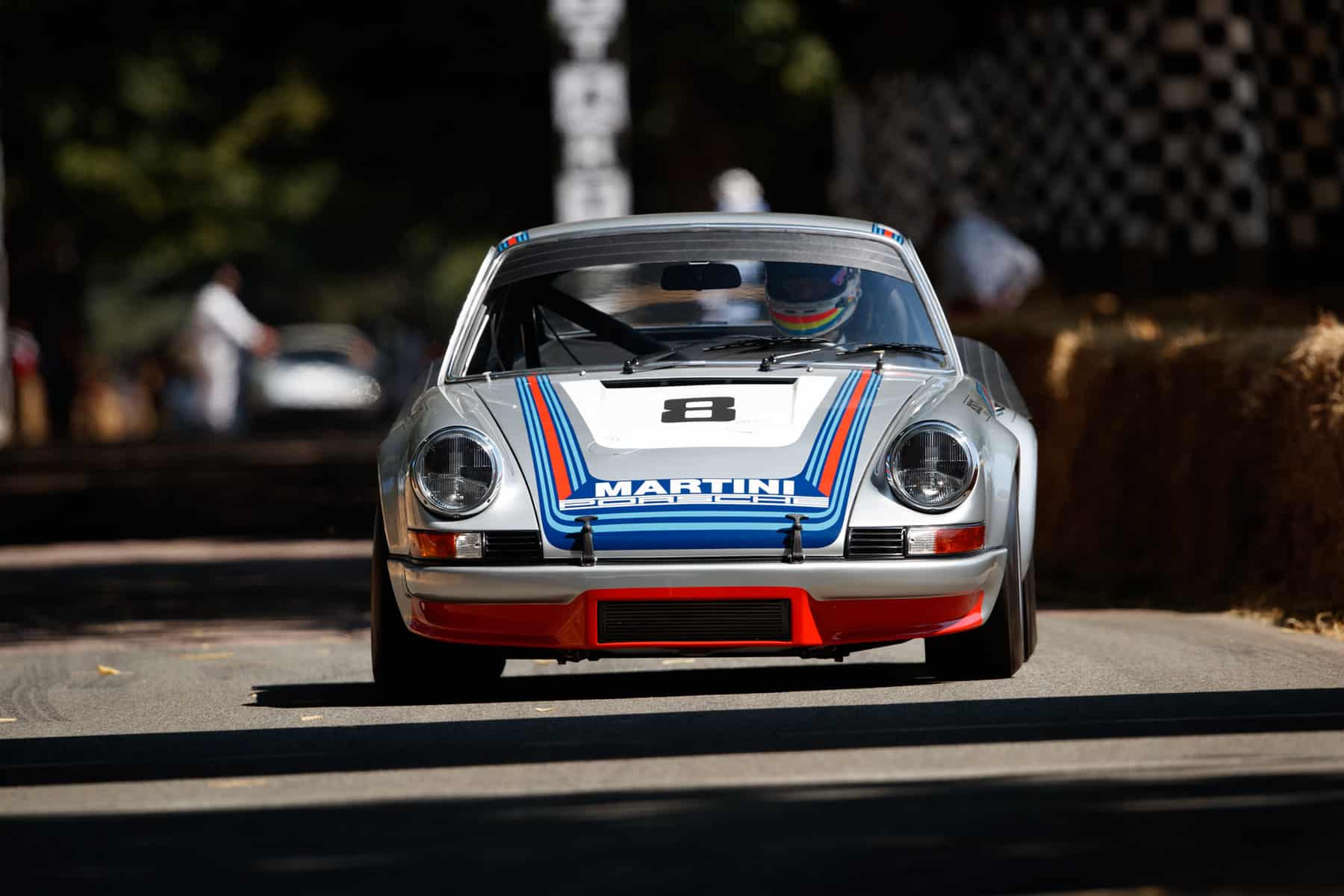
Lost and Found Down Under
The saga of Arthur Kennard's Austin-Healey 100 Corvette
BY: WOUTER MELISSEN
A popular “go-fast” solution from the second half of the 1950s was to fit a small-block Chevrolet V8 as a replacement engine. Introduced in 1955, the compact V8 was relatively cheap, reliable, and powerful.
The small-block was the engine of choice for backyard specials but also served to power more exotic machinery like Ferraris to prolong their competition careers. This was not just common practice in North America but was also a popular upgrade “Down Under.” One of the most famous cars to undergo a small-block transplant in New Zealand was this Austin-Healey 100/4. This operation was carried out in 1957 with a surgeon’s eye for detail by Arthur Kennard, who won on his first outing with the car.
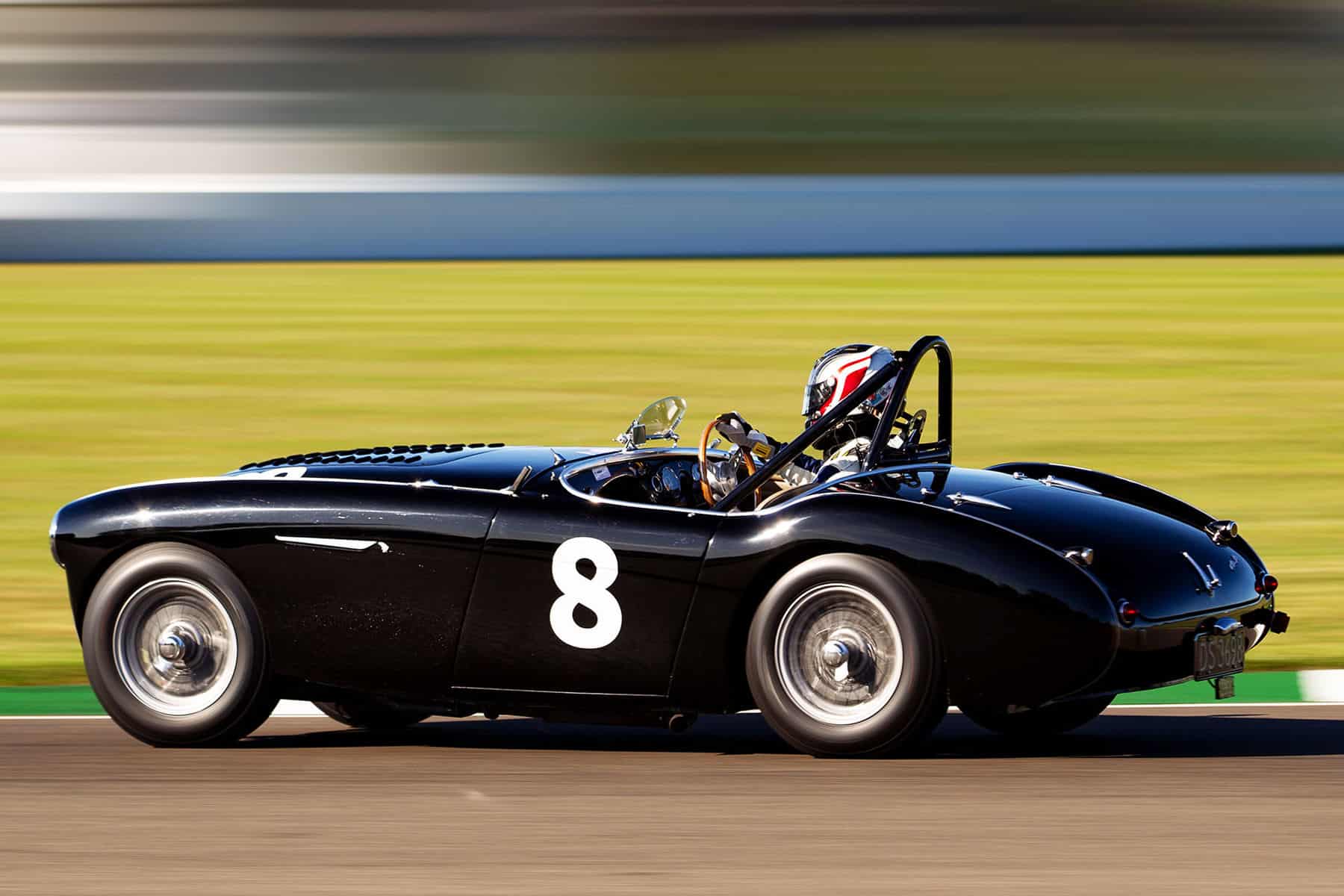
Launched in 1953, the 100 was the brainchild of Donald Healey and combined a striking sports car chassis and body with mechanicals sourced from the Austin A90. As such, it was powered by a four-cylinder engine with overhead valves and 2.7 liters, or 162 cu, in displacement. In standard trim, the big Austin “four” produced 90 hp. It was mated to a gearbox with three forward speeds and an overdrive on second and third. The suspension and drum brakes were also sourced from the Austin parts bin. As a result, the Austin-Healey was a relatively cheap sports car and, of the first-generation model, a startling 10,030 examples were built between 1953 and 1955.
This 100 is understood to be one of the first if not the very first examples registered on the road in the UK. It was subsequently acquired by legendary Kiwi speedway racer Geoff Marden while on a visit to race in England. It was common practice for racers to buy rare sports cars while overseas and then bring them back to New Zealand, where they were very hard to come by. It was a good way to cover some of the travel expenses. Having used the car on the road in England to travel between the speedway venues, Marden shipped the 100 home in 1955.
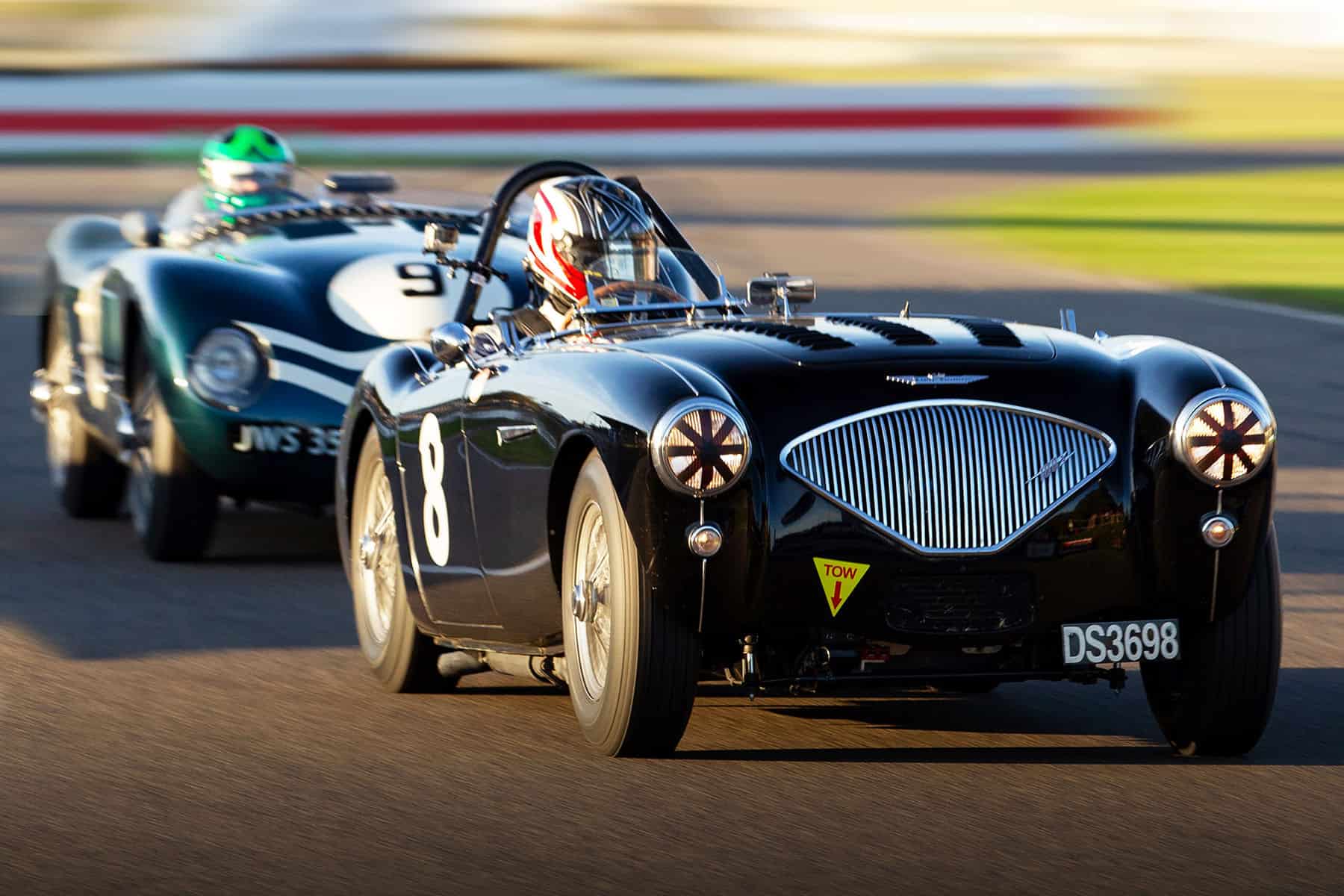
Once in New Zealand, the 100 was acquired by avid racer Arthur Kennard. He had competed in everything from an early Ford Consul to an RA specially built by Jack Brewer and fitted with a mid-mounted Chevrolet small-block engine. Kennard initially raced the Austin-Healey in standard trim from the end of 1955 through the end of the 1956-57 season. He had some success with the car but by 1957 realized that something drastic was required to keep the four-year-old machine competitive.
So, as one did at the time, he ventured to the local Chevrolet dealer, which was Blackwells in Christchurch. He inquired about a small-block engine and was told to wait a few weeks for the new 283 Corvette engine that had been introduced in April 1957. This would give him an edge over many of his rivals, who usually settled for the small-block V8 in standard trim. As fitted to the Corvette and equipped with two four-barrel carburetors, the Chevrolet V8 was good for a hefty 283 hp. It was definitely worth the wait, and the engine Kennard eventually got his hands on was actually the very first 283 in the country.
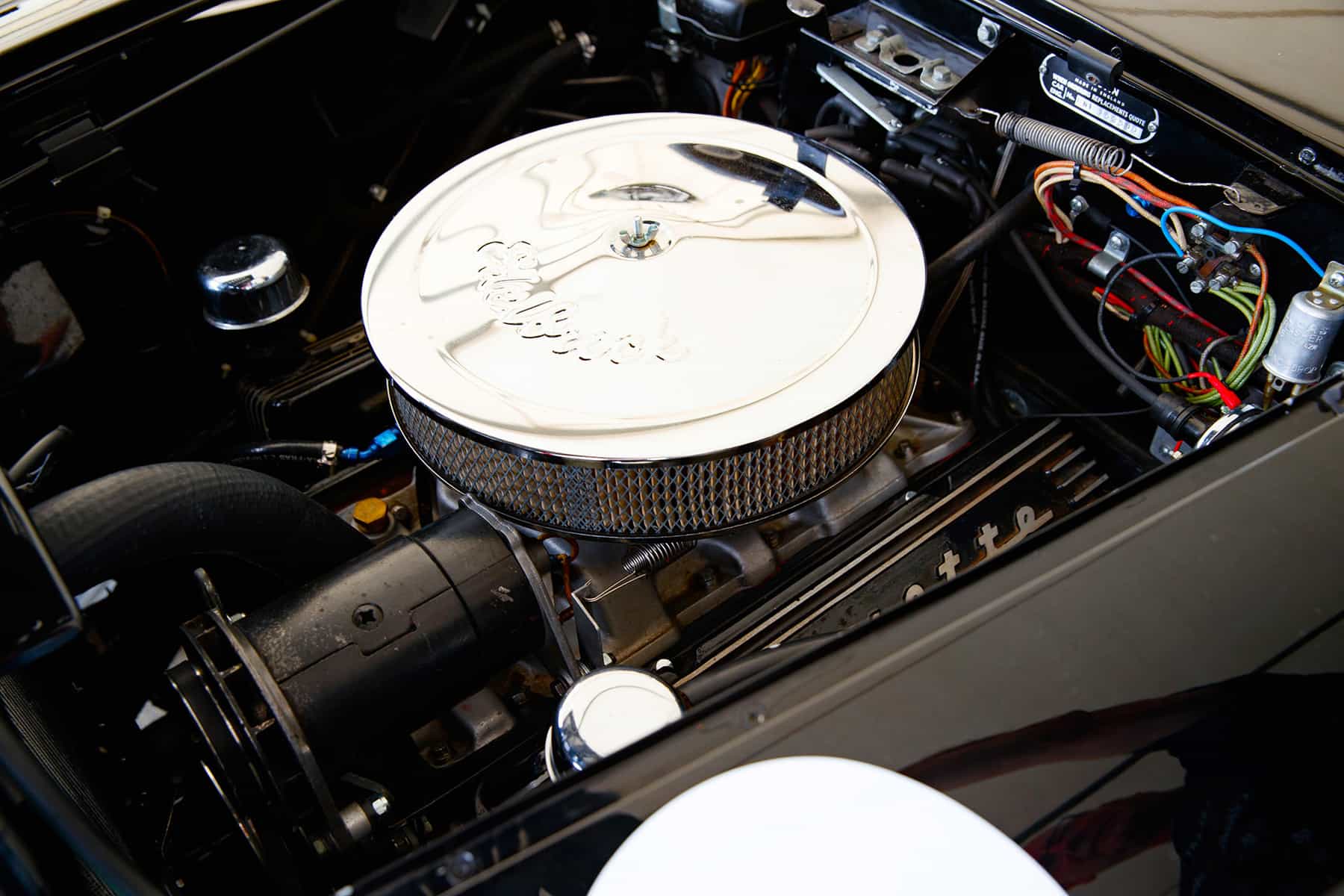
In addition to the engine, Kennard also managed to source a gearbox with four proper forward gears in the United States. Despite a significant increase in displacement, the V8 fit in the Austin-Healey chassis quite neatly. Further modifications to the car included an upgrade to Dunlop disc brakes, which had originally been fitted to an Aston Martin DB2. The front suspension was beefed up with a pair of adjustable shock absorbers, while the rear end received a Salisbury differential.
Kennard had retained the original radiator, which was not quite up to the task. To cure the overheating issues, three rows of louvers were cut in the engine cover. Later in its racing career, stronger steel wheels were fitted at the rear, but other than that the Corvette-engined Austin-Healey worked very well straight out of the box. Compared with the Austin-sourced drivetrain, the new engine and gearbox were just 20 pounds heavier. Kennard had clocked the quarter-mile sprint and top speed before and after the conversion and the improvements were significant, with 16.8 seconds and 115 mph in original guise versus 14.5 seconds and 140 mph after modifications.
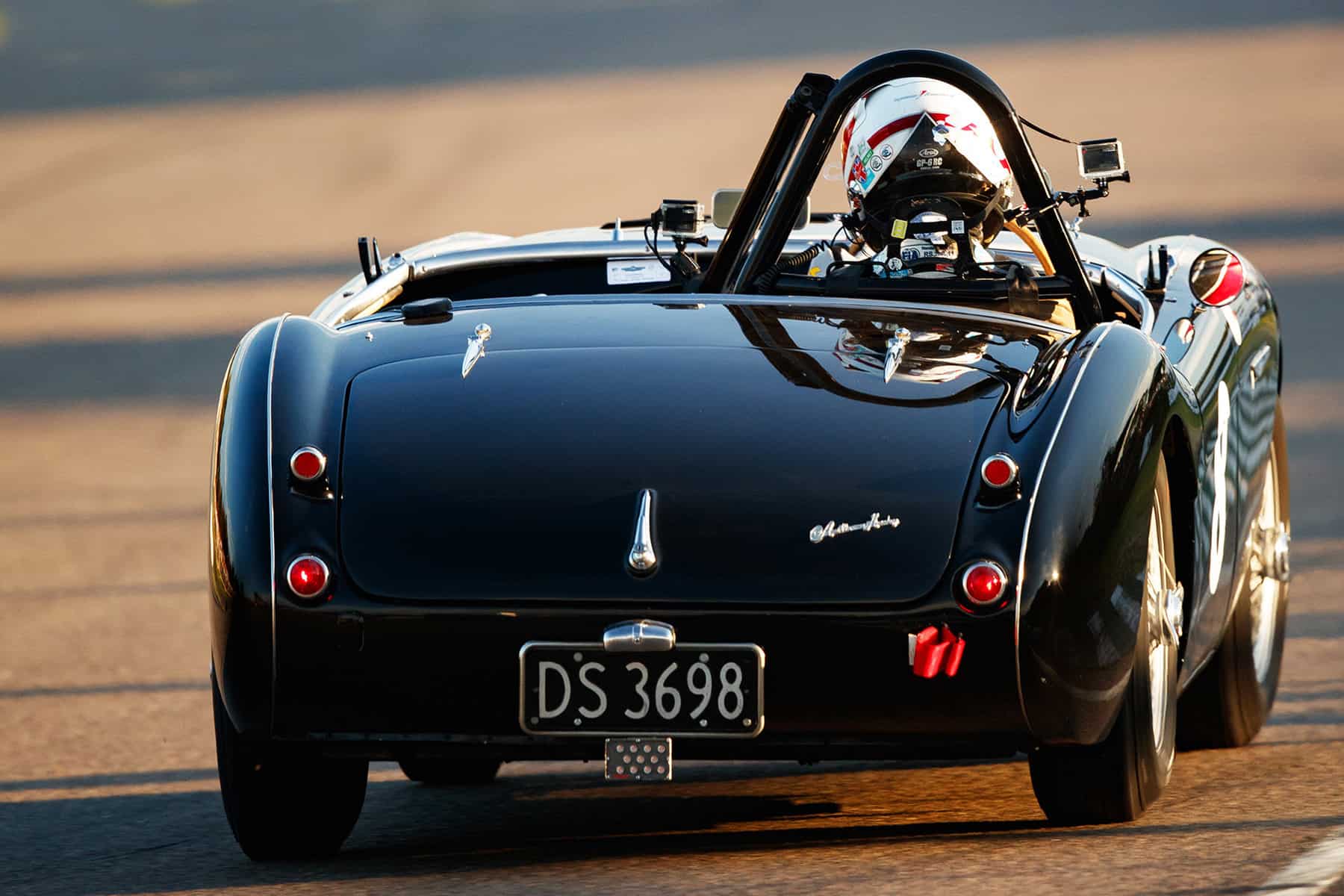
Almost immediately after the work was completed, Kennard took the Corvette-engined Healey to the Ardmore track for the Ken Wharton Memorial Trophy Race and triumphed over a colorful mix of sports racers. It was the start of a hugely successful racing career, which saw the car compete in the top six for the better part of two seasons. At the end of 1959, Kennard decided to sell the car; before he did, though, he entrusted it to his wife, Ngaire, for a sprint event at Longbeach Road. She averaged 128.52 mph on the flying kilometer, making her the fastest woman in Australasia.
In the hands of its next custodian, the Corvette-engined Healey continued to be raced but it was beginning to show its age. In 1967, it was acquired by Bruce Cole. Sadly, his ownership was short-lived, as he damaged the unique Austin-Healey Corvette hybrid significantly – the insurance company labeled the car a write-off, so Cole at least got some of his money back. The remains ended up in a wrecking yard while the engine was sold and used in a show car. The battered car sat in the corner of the yard until 1984, when Dave Bunn, a great car enthusiast, found it and bought it.
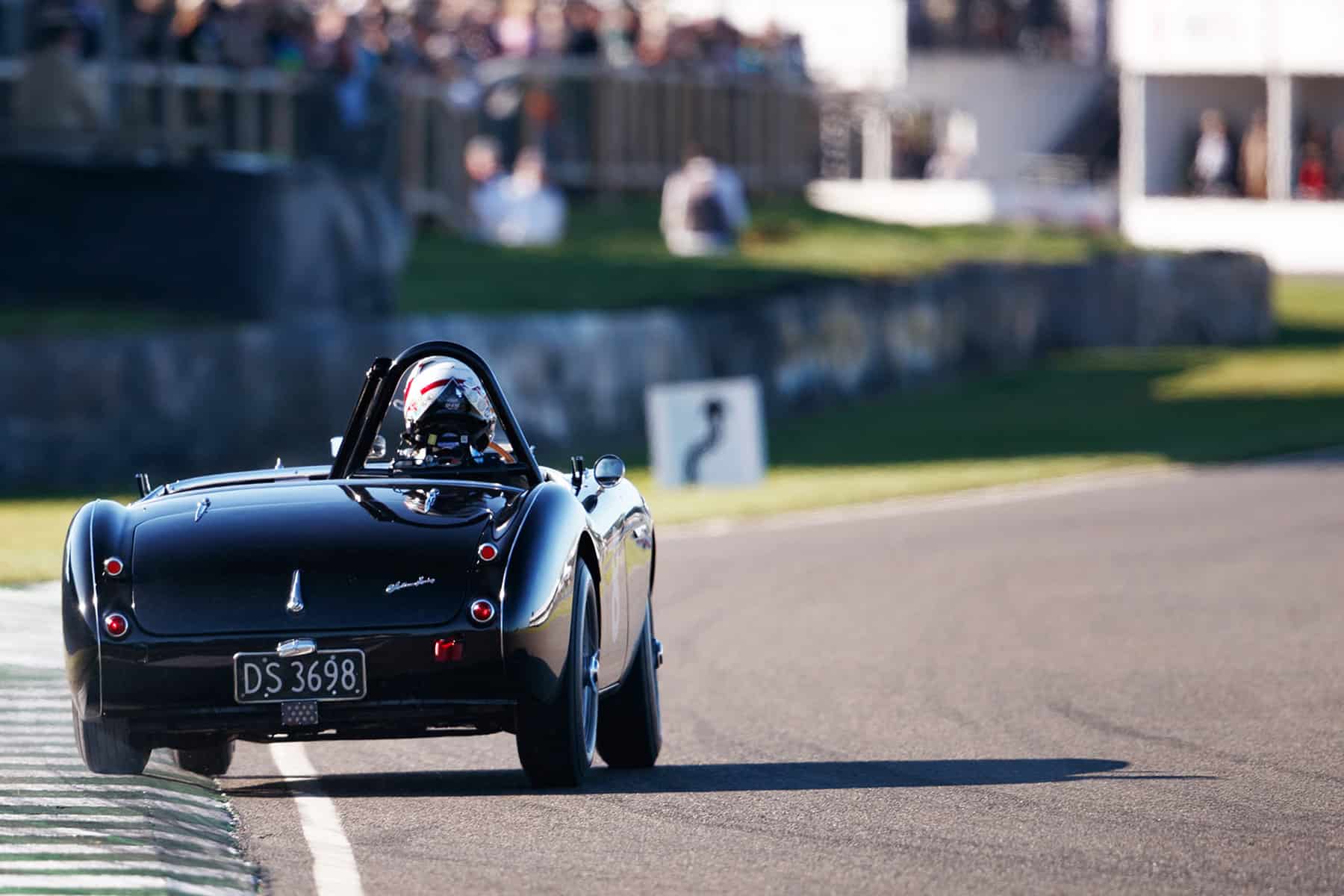
Working on the car alongside his other projects, Bunn spent many years repairing and rebuilding the unique Austin-Healey. While he did not manage to find the 283 Corvette engine originally fitted by Kennard, he did track down a correct replacement block with an engine number sufficiently close. What was a great help for Bunn was that Kennard, together with his daughter, Adrienne, had kept detailed records of his exploits with the car in photographs that filled albums. Adrienne kindly made all of these available to Bunn to ensure the car was accurately restored.
By the time Bunn had restored the sheet metal and the car was fully painted, it came to the attention of one of his customers, Christchurch-based enthusiast Lindsay O’Donnell. He was very keen to see the restoration completed and, after first considering going in on the car fifty-fifty, O’Donnell eventually decided to buy it outright. To sort out all the mechanicals, the car was then sent to Eric Swinbourn. He made sure that the Austin-Healey Corvette not only looked as good as it did in 1957, but that it performed accordingly. Nearly five decades after Cole’s accident took the car off the road, it was finally fighting fit once again.

Honoring Kennard’s legacy, O’Donnell did not just have the car restored to its former glory, but he also regularly competes with it in historic races in New Zealand. His efforts had not gone unnoticed on the other side of the world and, in 2019, the Austin-Healey Corvette was invited to participate in the Freddie March Memorial Trophy during the Goodwood Revival Meeting. To ensure the successful racer lived up to expectations, O’Donnell asked ace historic racer Michael Lyons to drive the Corvette-engined Healey.
Pitched against a choice of Jaguar C-Types and D-Types, and Ferrari and Maserati sports racers, Lyons did very well to set the sixth-fastest time in practice. Sadly, an engine issue ended the race for the Healey Corvette after eleven of fourteen laps. The car’s performance before the retirement was a testament to Kennard’s craftsmanship and underlined that the unique machine is still able to take on far more exotic machinery.


![alfa gtz perfectly imperfect webannerl[1]](https://automedia.revsinstitute.org/wp-content/uploads/2024/08/Alfa-GTZ-Perfectly-Imperfect-webannerl1-uai-1200x800.jpg)
